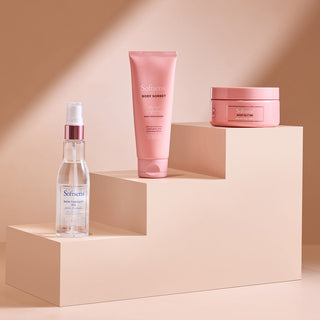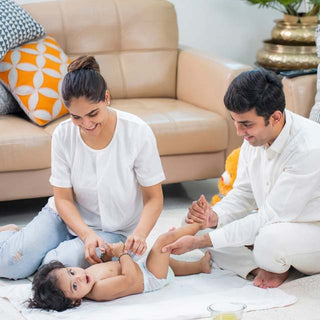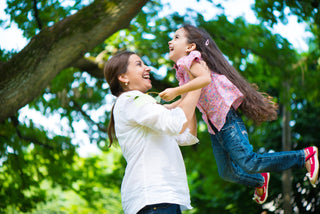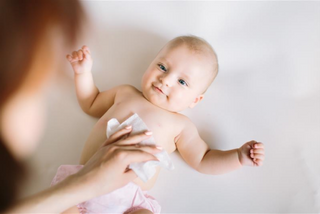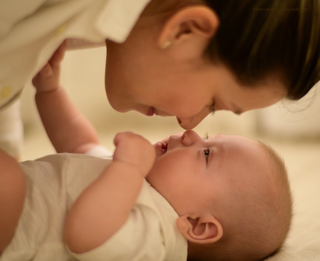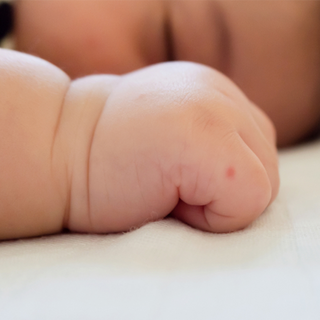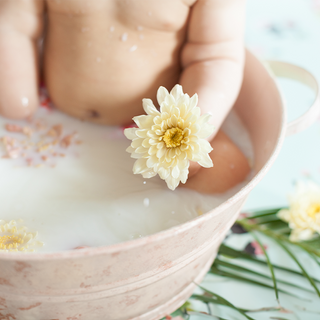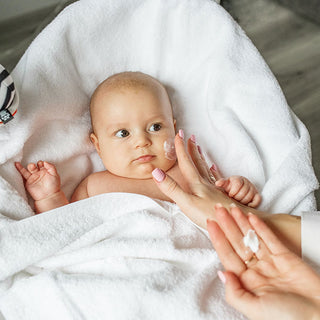
Shopping for baby clothes can be pretty addictive, so before you get carried away and pick up ten adorable baby dresses for your newborn (simply because they’re cute), it’s important to stop and consider a few essential things. In this guide to shopping for baby apparel, we’ve put together basic tips, monthly guidelines and seasonal advice on what to keep in mind while dressing your baby. Let’s begin with some essential tips that you can follow before you start shopping:
-
Think about size
Newborns grow pretty fast so don’t buy too much clothing for the first few months. A good rule is to wait until your baby arrives to buy a majority of their clothing. Even though your baby might actually be within the 0-3 months category, he/she might already fit into a larger size. Alternatively, buy a few different sizes at the beginning and once your baby arrives, you can return items if you think that your baby might soon outgrow them. Click here to check out our ‘Newborn Baby Clothing Checklist’.
-
Consider the weather and seasons
Think about what kind of weather it will be when your baby arrives. Click here to know more about how to choose baby attire according to the weather.
-
Choose practical, comfortable clothing
Keep in mind that babies have to be changed multiple times a day. So, you don’t want clothing that’s hard to put on or remove. Most baby onesies have snaps at the bottom so that you can change your baby’s diapers easily without removing the whole outfit. If you’re buying a vests or t-shirts, make sure they have a wide neck so that you can easily put it on your baby without any fuss. Any pants/bottoms should always have a stretchy elastic waistband instead of buttons. Stay away from hoods as they can be pretty uncomfortable for babies.
In addition to being practical, clothes should also be very comfortable and light on your baby’s delicate skin. Harsh, rough fabrics can irritate your baby’s skin. Organic cotton fabrics tend to be the best choice for baby clothing as they are extremely soft, light, breathable and durable. Organic fabric is grown without the use of harsh pesticides and fertilizers and is hence completely safe for your baby’s skin.
-
Put safety first
The most important rule when buying baby clothes – keep it simple! Avoid all the extra buttons, flowers, bows and accessories that baby can easily tug at and pull off. These are choking hazards for your tiny baby. Remove clothes tags as these can usually irritate baby’s soft skin. Always wash every single piece of baby clothing before you put it on your baby, preferably with a baby-safe or mild laundry detergent.
Now that we’ve got the basics covered, let’s look at some age-wise advice on dressing your baby!
1. For babies that are 0-3 months old
- At this age, babies need to be changed very often. So, stick to organic onesies/baby bodysuits with a snap button at the bottom for easy diaper changes.
- Your baby loves to be swaddled at this age so you’ll need at least 4-5 swaddle blankets, if not more, depending on how often you wash them.
- As your baby will spend most of the time sleeping, you want to make sure that clothing is light and comfortable.
- A lot of babies tend to kick a lot, thus flinging off their socks in the process. If your baby does this, choose snug socks that won’t easily come off or simply dress your baby in long baby footies that cover their feet as well.
- When taking your baby outdoors in the sun, you need to cover their skin appropriately as babies cannot ideally use sunscreen for the first six months. Dress them in long-sleeved clothing that covers their skin, but is still light and breathable to prevent overheating. Make them wear a wide-brimmed hat to cover the face.
- When buying tops and baby dresses, make sure the neck is wide enough to easily go over your baby’s head while dressing. Avoid anything with a collar or high neck. Bottoms/tights with a wide elastic waistband are the most practical and convenient.
2. For babies that are 3-6 months old
- Although onesies are still the most comfortable clothing for babies even at this age, you can also make your baby wear other combinations during the day such as comfy tights tops or t-shirts, and dresses for baby girls.
- At night, a soft pair of footie pyjamas will help keep baby cozy and comfy from top to toe.
- Babies become more curious and aware, he/she is more likely to start reaching out for items and pulling at them. So, keep clothes simple and avoid extra detailing and decorative add-ons.
3. For babies that are 6-9 months old
- As your baby grows, he/she will soon start crawling or walking. To make sure they don’t slip while scooting across the floor, avoid making your baby wear socks or anything that covers their feet when you put them down. If you do, choose anti-skid clothing.
- Comfy pants/tights are a good choice when your baby begins to crawl as it will help protect their knees. Since your baby is now moving around, clothing should be comfortable and stretchy so as to maximize movement.
4. For babies that are 9-12 months old
- If your baby has started eating finger foods, things are about to get pretty messy! This means more outfit changes and more laundry. Buy baby items in darker colours so that stains are easier to remove. Stock up on baby bibs as you will need those at feeding time.
- Stretchy tops, tees and bottoms are perfect for daily wear as baby starts moving about even more. Organic cotton fabrics are more flexible, making them a great choice for baby clothing.
Tips on Dressing your Baby according to the Weather
- In warm weather, onesies, rompers, vests with wide necks are all good choices. Always make sure that clothing is light and breathable so that baby doesn’t get overheated.
- The general thumb rule is to dress your baby in one layer extra than what you’re wearing, as babies are more sensitive to temperature changes.
- During cold weather, dress your baby in layers that are easy to remove when needed. Start with a long-sleeved bodysuit/footie/baby jumpsuit, add pants and a shirt if needed, a cozy baby jacket on top of that and a snowsuit, if necessary.
- You can dress your baby in fleece during winter but direct skin contact with harsher fabrics might irritate your baby’s skin. That’s why always make sure you put on a base layer that’s made of a lighter, softer fabric and then layer on top of that.
- In cold weather, make sure you cover your baby from top to toe, including with a cap for their head and ears and warm booties/socks for their feet.
How to Dress your Baby when going Swimming
- You don’t need to wait to introduce your baby to the swimming pool, although some moms do hold off until baby is 6 weeks or so to prevent any chance of infection.
- Firstly, get a good swim diaper. Your baby is going to have accidents and you don’t want to contaminate the swimming pool. You can get either disposable swim diapers or reusable swim diapers.
- Babies are more sensitive to the cold, so a baby wetsuit can help keep your baby covered and comfortable in the water. Less than 3 months old babies should be taken to heated pools. Baby swimming wraps are also easy to put on and can keep baby warm in the water.
- If you’re taking baby swimming outdoors, make sure they have enough sun protection. Rash guards can help protect their sensitive skin.
Choosing Appropriate Footwear
- Babies don’t need proper shoes until they start walking. Baby socks and booties are perfect for the pre-walking stage.
- When your baby begins to walk, you can choose from a wide range of infant shoes available in stores. Always make sure the shoe is comfortable enough with a little extra space as baby’s feet tend to grow pretty fast.
- Since your baby is learning how to walk and run properly, make sure the shoes have a proper grip.
- In warmer weather, one-toe sandals are great but make sure they have a strap securing the foot in the front and at the back.
Got any more tips on how to choose the right clothes for your baby? Leave us a comment below!

